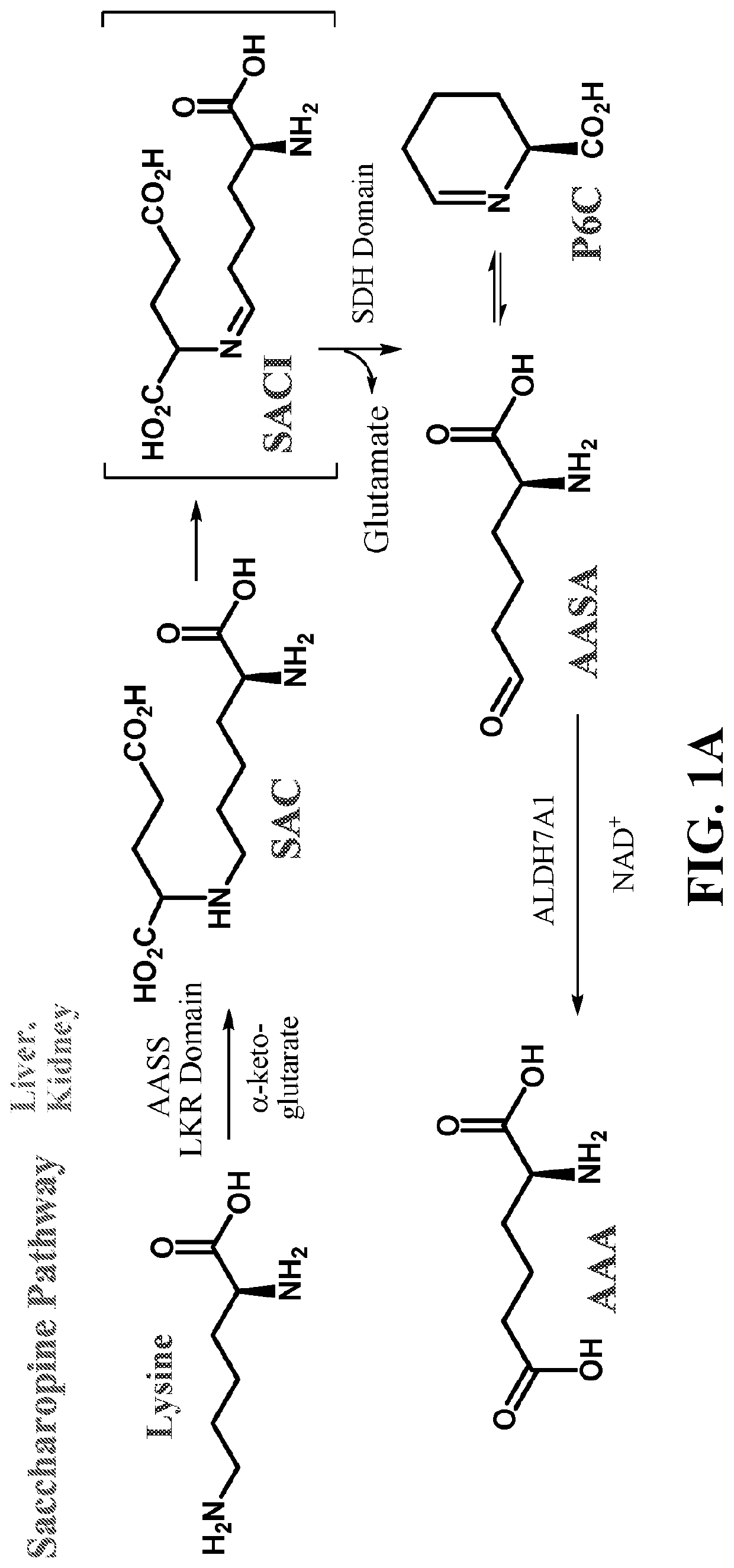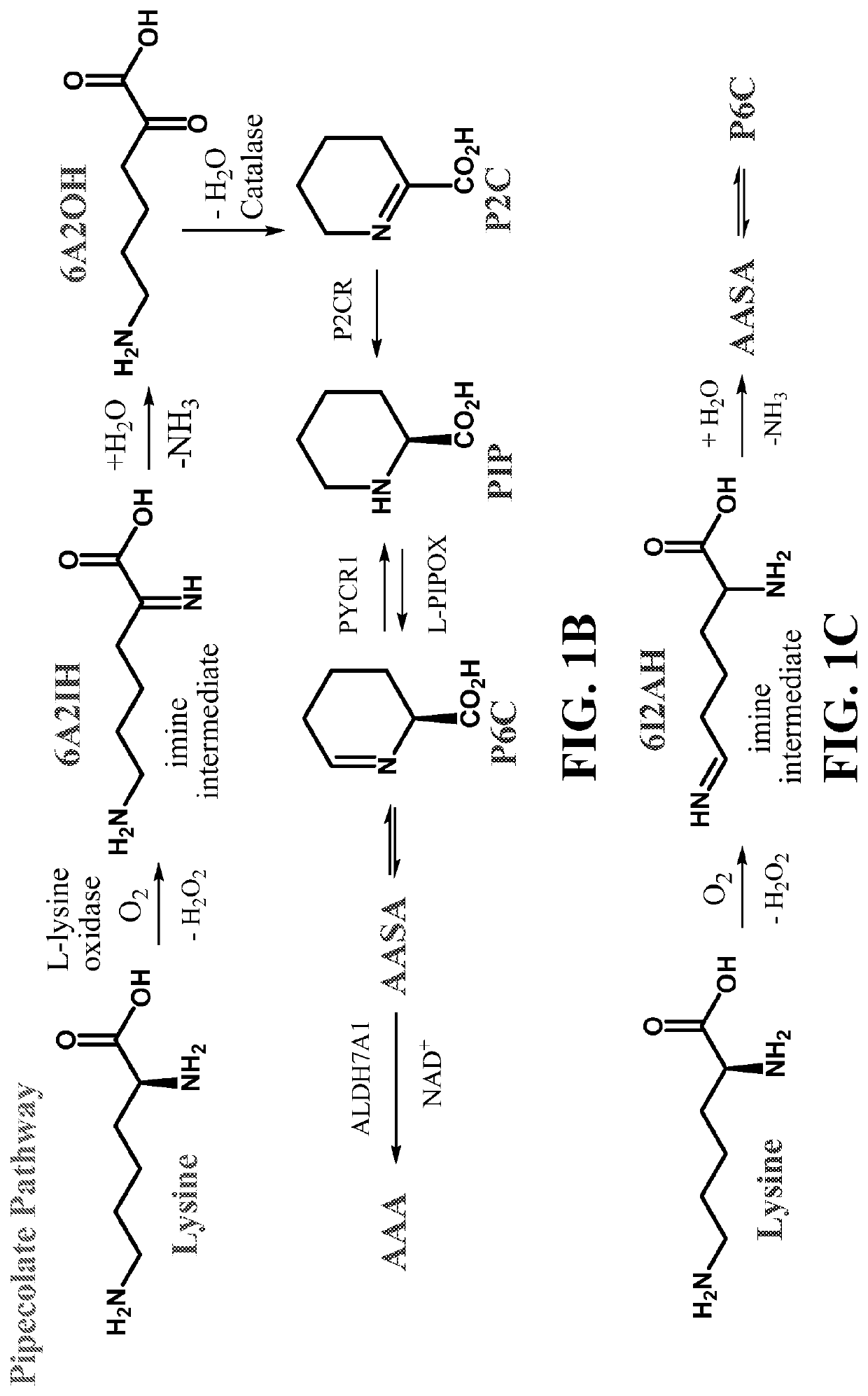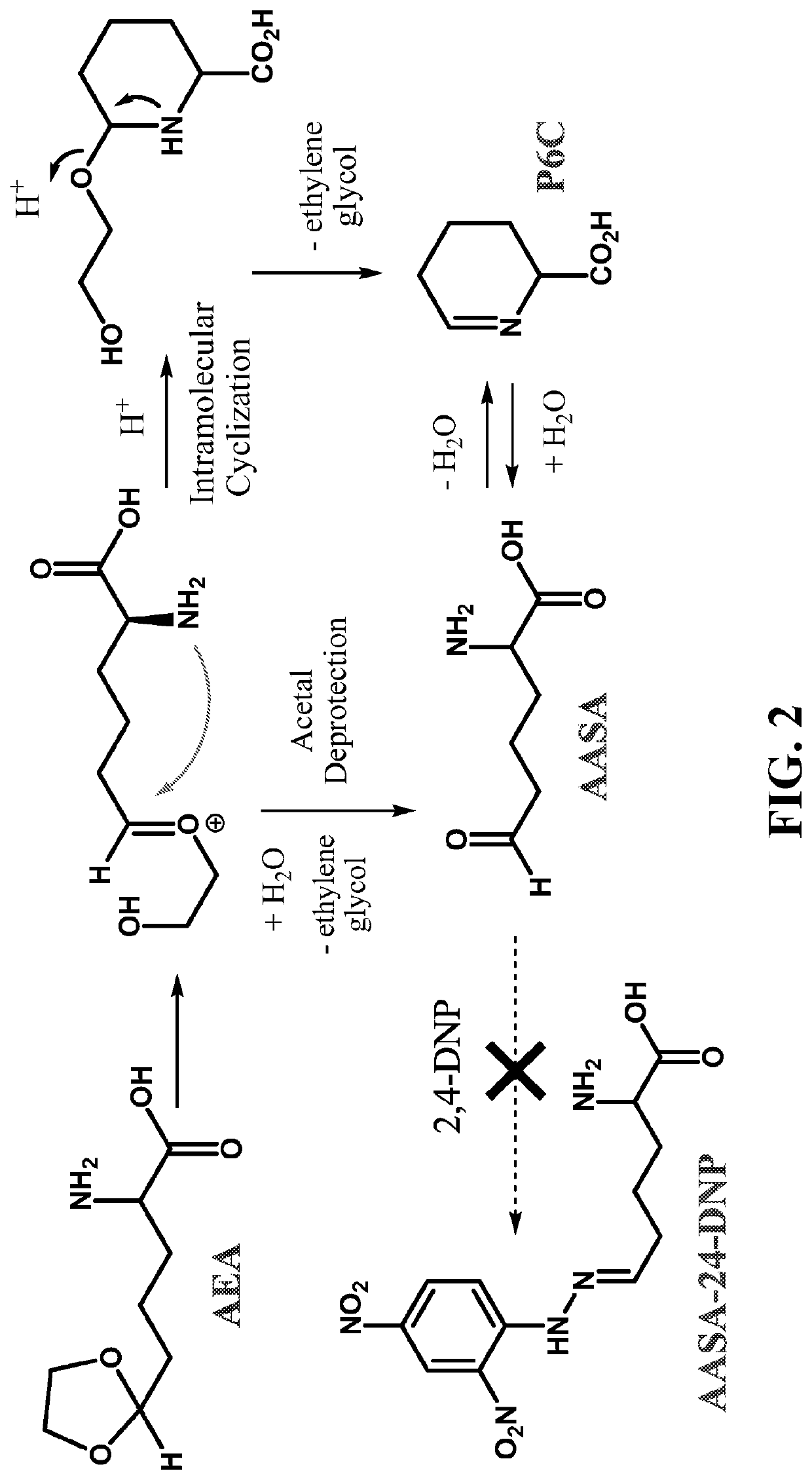6-oxo-pipecolic acid quantitation by mass spectrometry
- Summary
- Abstract
- Description
- Claims
- Application Information
AI Technical Summary
Benefits of technology
Problems solved by technology
Method used
Image
Examples
example 1
Preparation of a-aminoadipic Semialdehyde (α-AASA) and Δ1-piperideine-6-carboxylate (Δ1-P6C)
[0120]We aimed to develop an LC / MS-MS method to monitor α-AASA and Δ1-P6C, but without the commonly used derivatization methods. We developed an LC / MS-MS method which detected allysine ethylene acetal (AEA) at a tR=12.3 min using the transition MRM of 190.2→128.0 m / z. We then prepared a purposed α-AASA / Δ1-P6C mixture using the Amberlyst-15 / NH4OH method described above, similar to previously described methods. Analyzing the α-AASA and Δ1-P6C mixture products as non-derivatized samples via electrospray ionization in positive ion mode (ESI+), we observed the expected M+H+ ions: α-AASA 146 m, and Δ1-P6C 128 m / z and their described daughter ions: α-AASA transitions 146.3 4→128.0, 82.1 and 55.1 m / z ions; Δ1-P6C transitions 128.2→82.0, and 55.0 m / z. The LC / MS-MS method resolved both components with Δ1-P6C at tR=8.5 min and α-AASA at tR=9.0 min. As summarized in Table 2, we found that the observed ra...
example 2
[0122]P6CH / Δ1-P6C not α-AASA / Δ1-P6C
[0123]Given the reported poor stability of α-AASA and Δ1-P6C in biological samples, we intended to derivatize the aldehyde within α-AASA with 2,4-dinitrophenyl hydrazine (2,4-DNP; FIG. 2) to a more stable compound with a potentially better LC / MS-MS sensitivity. Surprisingly, we observed no reaction when mixing a fresh batch of α-AASA and Δ1-P6C prepared by the Amberlyst 15 / NH4OH method with 2,4-DNP reagent. An infrared spectrum of lyophilized α-AASA / Δ1-P6C mixture did not show a characteristic aldehyde transition at 2700 cm−1. These experimental results were not in agreement with the notion that aldehyde α-AASA was produced from AEA.
[0124]To reconcile the discrepancy between our findings and previously published assumptions, we performed a series of 1H and 13C NMR experiments. Both 1H and 13C-NMR of AEA confirmed the starting material and relative purity. To study its products, we dissolved AEA in D2O and added either DC1 or D2SO4 to initiate the r...
example 3
[0127]P6CH / Δ1-P6C Formed from α-aminoadipic Semialdehyde Synthase
[0128]Having demonstrated the chemical generation of standards from AEA produced P6CH / Δ1-P6C rather than α-AASA / Δ1-P6C, we next wanted to confirm that the enzyme a-aminoadipic semialdehyde synthase (AASS) in the main enzymatic pathway (the saccharopine pathway) produced the same metabolites. We incubated saccharopine with purified AASS and NAD+, and observed the reaction products Δ1-P6C / P6CH on LC-MS / MS, and the products formed also failed to give a positive 2,4-DNP test. With this confirmation, we concluded that P6CH, not α-AASA, is the product of AASS and the substrate(s) for the α-AASA dehydrogenase enzyme.
PUM
 Login to View More
Login to View More Abstract
Description
Claims
Application Information
 Login to View More
Login to View More - R&D
- Intellectual Property
- Life Sciences
- Materials
- Tech Scout
- Unparalleled Data Quality
- Higher Quality Content
- 60% Fewer Hallucinations
Browse by: Latest US Patents, China's latest patents, Technical Efficacy Thesaurus, Application Domain, Technology Topic, Popular Technical Reports.
© 2025 PatSnap. All rights reserved.Legal|Privacy policy|Modern Slavery Act Transparency Statement|Sitemap|About US| Contact US: help@patsnap.com



